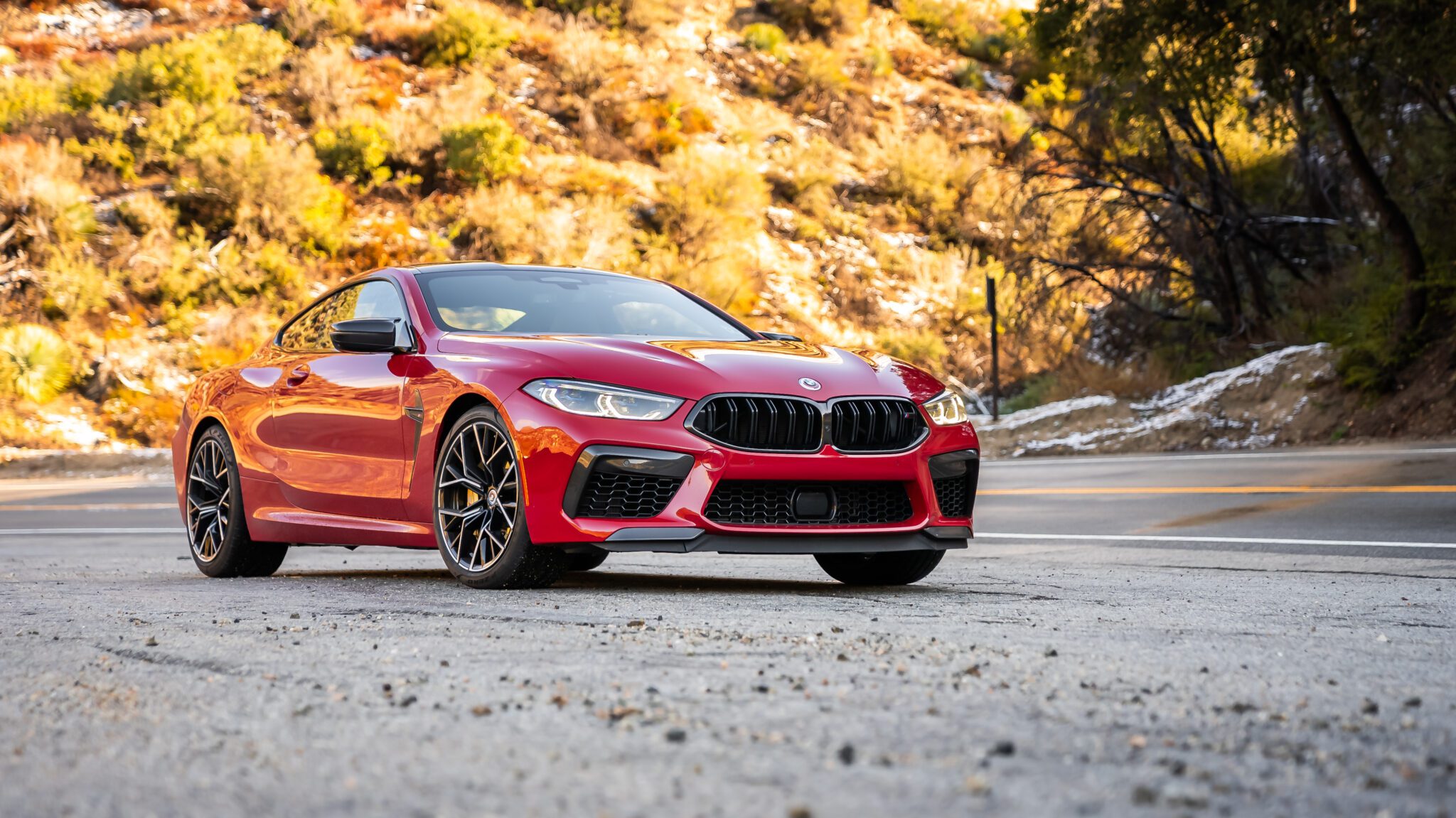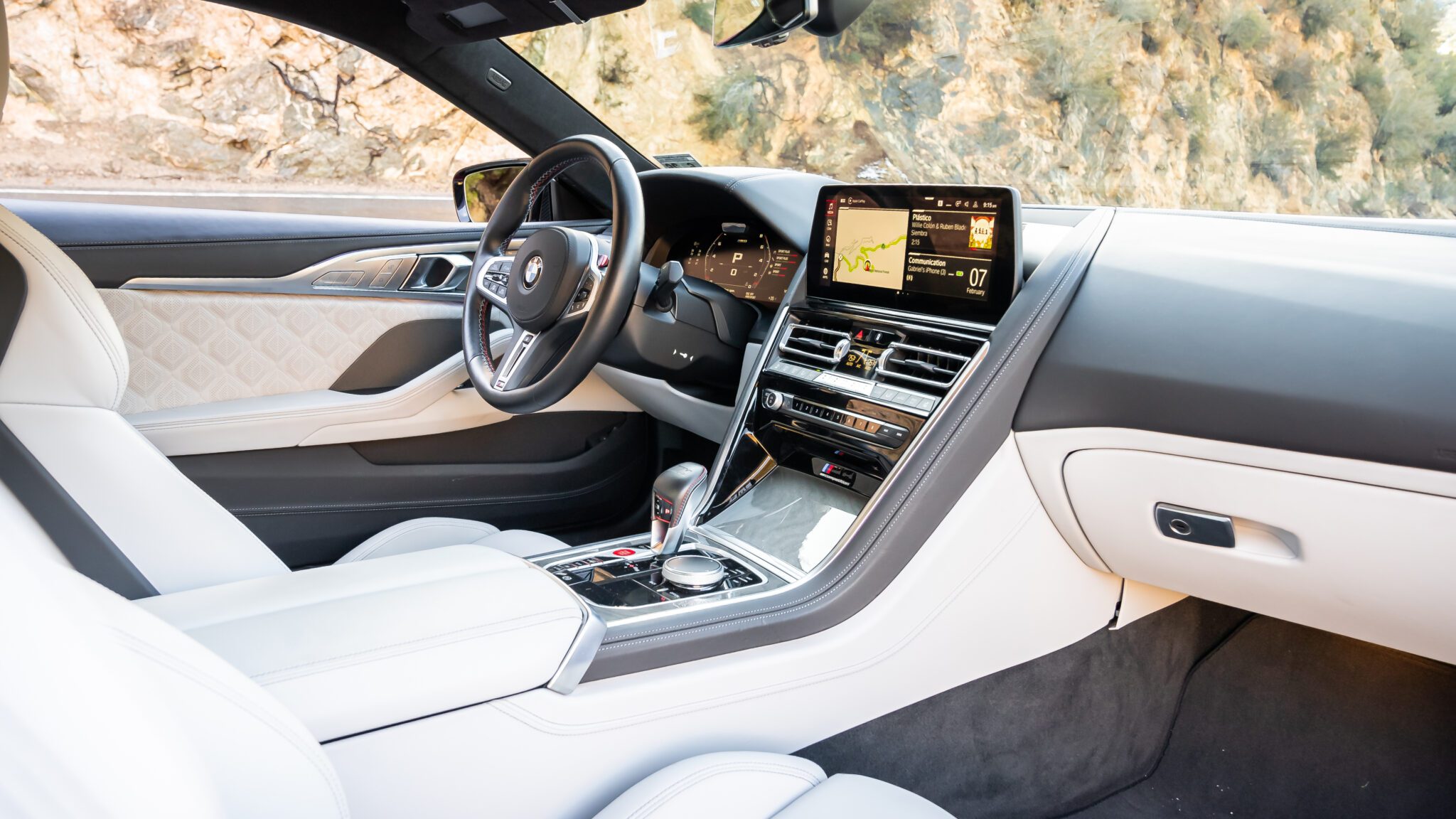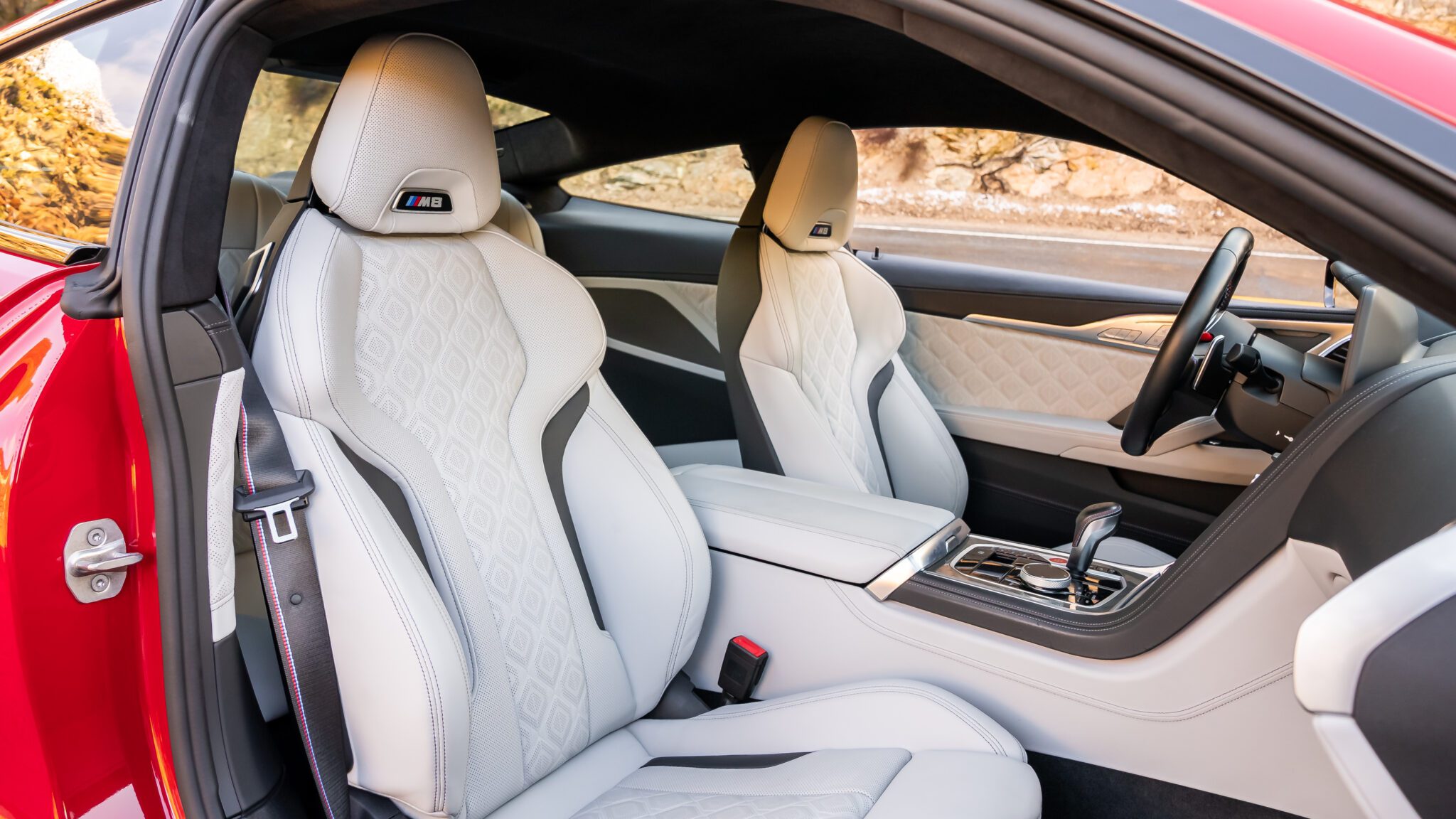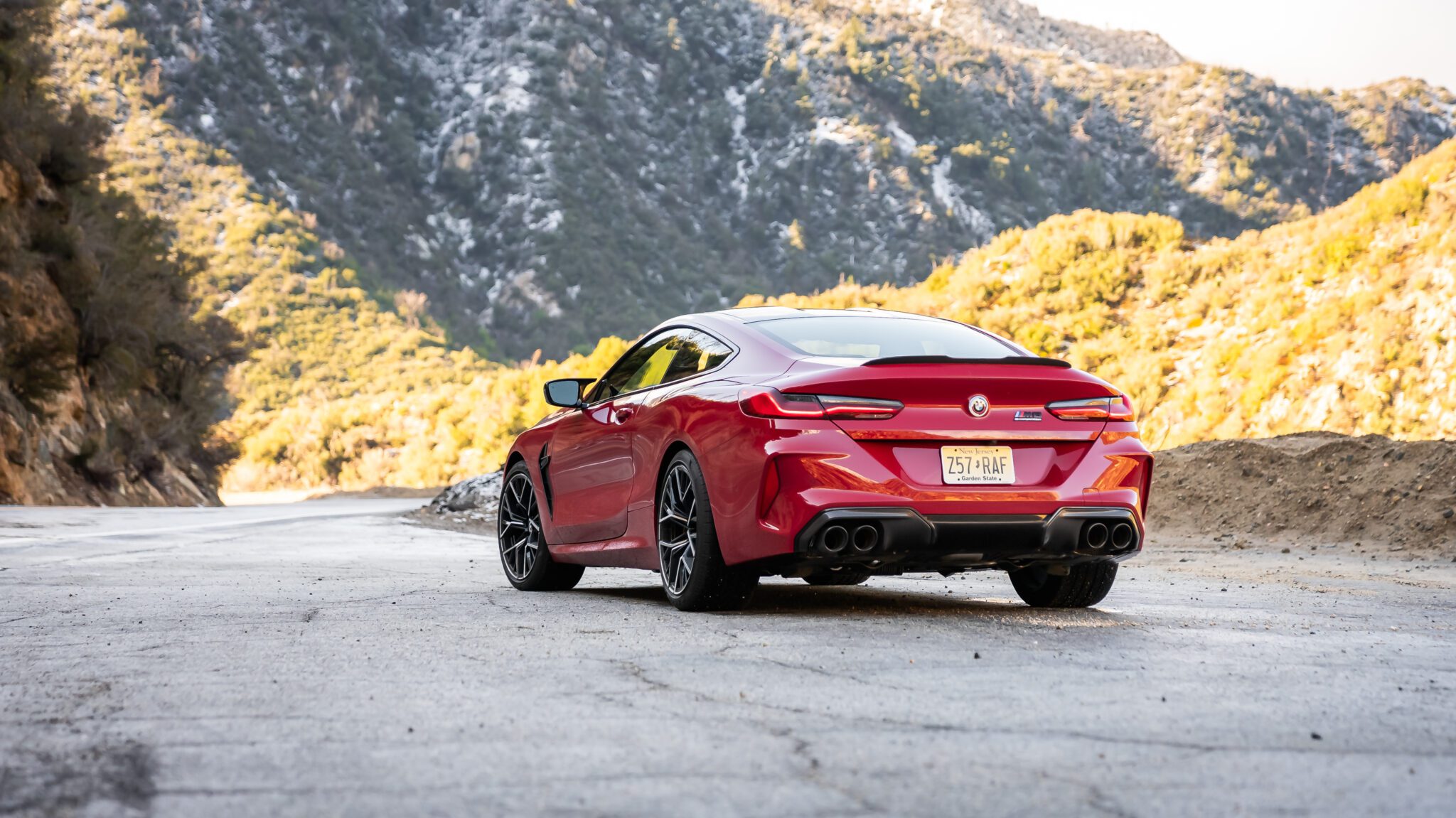The BMW M8 Competition Is An Overachieving GT

[ad_1]
Until the early 2000s, automakers mainly designed cars to meet one overarching goal. Sports cars only had to be sporty, luxury cars only had to be luxurious, while SUVs got away with being dressed-up off-roaders. However, as engine, tire, and suspension technology have advanced, these predetermined lines have blurred. Porsche’s Cayenne Turbo GT, for example, is somehow equal parts family hauler and canyon carver, while McLaren’s 720S sprints like a hypercar while simultaneously offering genuine daily usability. The breadth of what cars can be has forever altered what we expect them to be.
Of course, not all machines successfully blend these multiple personas. Some fall painfully flat in the eyes of their target demo as they overextend to reach a wider audience. Others are the BMW M8 Competition, a 617-hp two-door that, at first glance, comes across as just a high-powered luxury GT but, upon closer inspection, reveals some seriously sporty intentions.
Historically, BMW’s grand tourers have been just that and only that. The original 8-Series certainly wasn’t setting any track records, while even the V10-powered M6 was great on an open highway but wasn’t exactly at home on a twisty back road. This range-topping 8-Series flips the script and pushes forward not just what a modern M-badged GT can be but through the depth of its range, it shows us what one should be.

Introduced in 2019 as the now-defunct M6’s replacement, the BMW M8 Competition doesn’t deviate much from its predecessor’s formula. Dimensionally, the pair are almost identical, with the eight being shorter, wider, and slightly lower to the ground. Its curb weight does increase by 45 pounds, but considering that it does so in part because it gains a standard all-wheel-drive system, such a small bump in weight is actually quite impressive.
What does change, however, is the M8’s performance. In competition form, its twin-turbocharged 4.4-liter V8 pumps out 617 horsepower and 553 pound-feet of torque, a modest 17-hp increase over the standard M8’s 600-hp figure. Like practically all fast BMWs today, it sends all that power to all four wheels via an eight-speed automatic transmission. Flat out, it’ll sprint to 60 mph in three seconds and top out at 155mph, or 190 mph, when equipped with the M Driver’s Package.

Those are the figures. However, it takes only minutes behind the wheel for the feeling to creep in that those numbers, while impressive in their own right, are grossly underrated. Three seconds to 60 is fast in anything, especially something that tips the scales at nearly two tonnes, but the M8 feels quicker still. There’s a ferocity and immediacy to how this turbo-eight delivers its power. Although the German carmaker has since equipped its fast SUVs with a mild-hybrid system to make their version of this powertrain more responsive, it’s hard to see why.
On a winding back road, you’d have to be in something from Woking, Sant’Agata Bolognese, or Maranello to outpace an M8 Competition in the bends, and the bends alone, for as soon as the road straightens, this full-size luxury GT is just as fast as most high-dollar exotics. In most cases, it would take a fair bit of mental gymnastics to frame a $160,000 super coupé as an overachiever, but when you consider that you’d have to spend at least double its as-tested price to beat its performance, it’s hard to call it anything but.

However, as fast as the M8 is, there’s an unmistakable disconnect between what its speedo reads and what you feel behind the wheel. While this GT’s excellent noise isolation is worth praising for how refined it makes its cabin feel, it simultaneously takes away from the driving experience, not allowing its driver to feel the physics-bending performance this car delivers. Although incredibly effective and precise, its electronic power steering and $8,150 carbon-ceramic brakes don’t do much to liven the experience, offering little feedback. Even the M8’s engine note, which permeates the cabin courtesy of this car’s speakers, sounds muffled in most scenarios.
Body roll is unavoidable when dealing with cars as powerful and heavy as the BMW M8 Competition. And while the German carmaker had the choice to firm up this car’s adaptive suspension system to dial this unwanted motion out, it’s almost impossible to un-stiffen a car once you do. Getting this balance just right is vital, especially in a big GT. While BMW certainly has had some missteps in the past, the range of the M8 Competition’s Adaptive M Suspension is impressive. It may be slightly firmer than what you’ll find in the standard M8, but it’s still cushier than expected. It may not hide this car’s heft particularly well around tight bends, but the trade-off is more than worthwhile for retaining daily comfort.

Still, don’t mistake body-roll for an overall lack of agility. The BMW M8 Competition tackles bends in a way something this large and heavy shouldn’t be able to. Its grip is seemingly endless, and despite a bit of push from the front end when you dive into a corner, this car’s all-wheel-drive system allows it to put all outfit power down on the way out. For extra fun, you can completely disengage the front wheels and exit corners sideways like most old-school BMWs do. This is an area where the M8’s softer suspension comes in handy, making it far less snappy once you reach its limits, vastly boosting driver confidence.
Swap the twisties for an open highway, and the M8 comes into its own. Like its predecessor and, honestly, practically all of BMW’s M cars, this large GT is most at home sitting at triple-digit speeds on an empty stretch of road. It’s comfortable but never floaty, and thanks to the noise isolation, it’s much quieter than you’d expect from a car wearing an italicized M on the back. Here, this two-door showcases the other half of its split persona, equally comfortable chasing supercars or on a cross-country road trip.


A significant contributing factor to this car’s comfort is its seat choice. Although its cabin is practically fully covered in leather while my tester adds a fair bit of carbon-fiber trim, the chairs you choose have the most significant impact. My tester correctly sticks to the standard M Sport Seats. I say correctly only because BMW’s carbon-backed buckets are available as an optional extra for this car. Although they’re fine in an M2 or M3, they’re fundamentally mismatched to this car’s overarching goals. And while they may make back road drives slightly more enjoyable, they’d detract from the drive elsewhere.
As the BMW M8 Competition enters its fifth model year, the German carmaker has added new options to its lengthy list of extras, such as the aforementioned carbon buckets. Its central infotainment screen grows from 10.25 inches to 12.3 inches, bringing this car’s interior up to speed with the rest of its lineup. In terms of its exterior, the changes are equally subtle. M Shadowline trim is now available for its Adaptive LED headlights, as are a handful of excellent colors such as Frozen Pure Grey, Tanzanite Blue II, and Isle of Man Green.

The BMW M8 Competition is a masterclass on incorporating modern technology to make something big and heavy dance in the bends like a proper lightweight. Although it may read like a big GT on paper, and its isolation from the world certainly backs this up, there’s no discounting this car’s sports car persona. By pairing supercar performance with relatively soft suspension and a plush cabin, this car achieves a duality most modern GTs can’t. For the nearly $160,000 my Imola Red tester costs, the breadth in the personality of BMW’s flagship makes it an inciting one-car solution.

[ad_2]